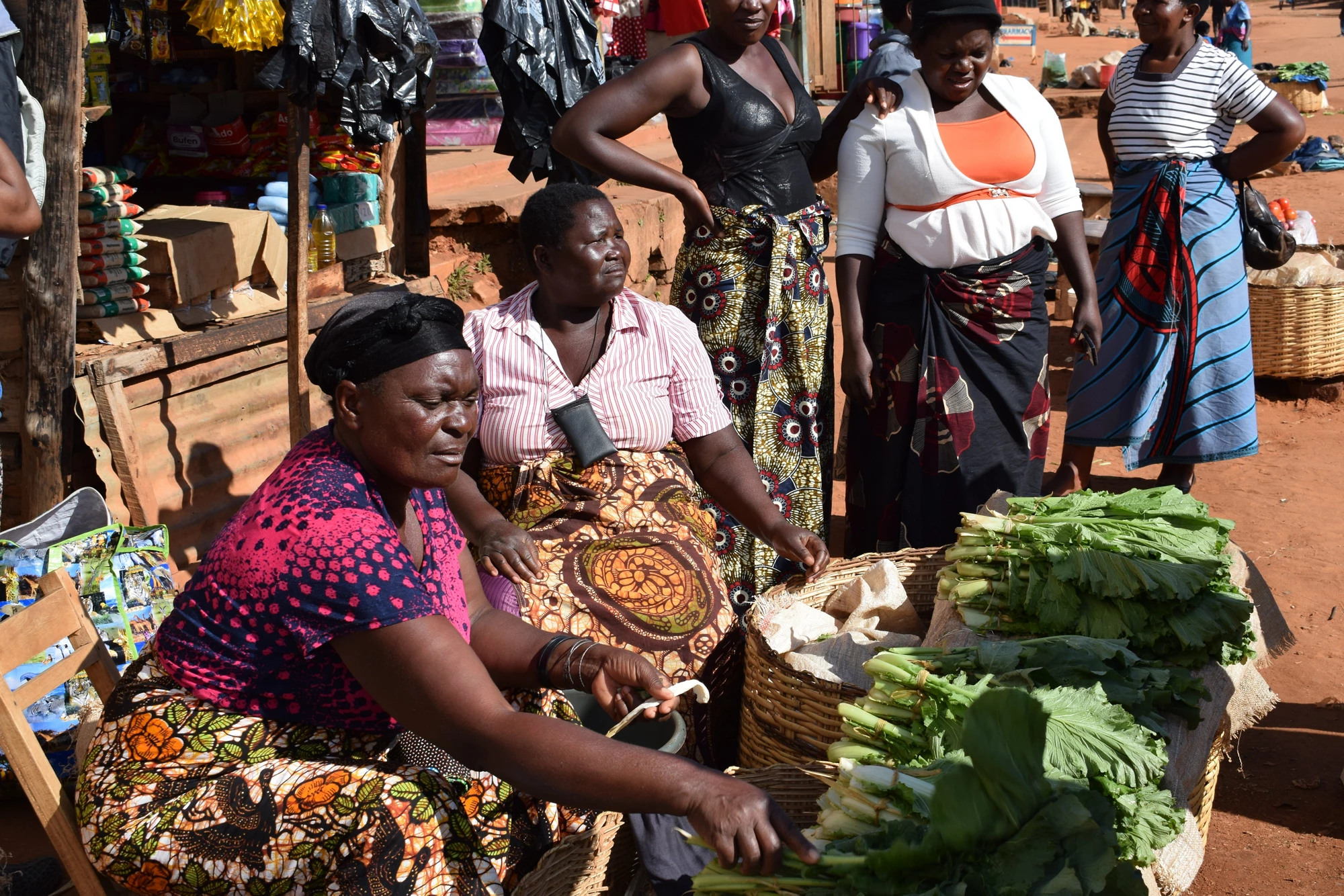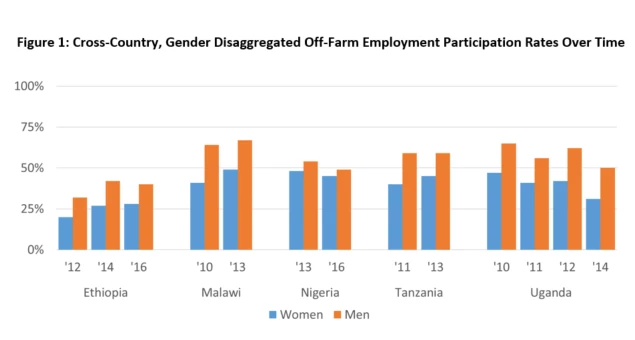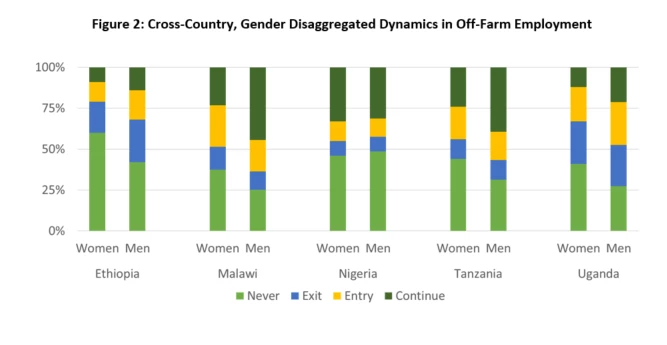
Female market traders in Malawi.
The data from the World Bank LSMS-ISA provide a fresh look at gender-differences in labor market outcomes in Africa
Despite the significant attention that off-farm employment has received by policy makers and researchers, there are still many things that we do not know. Most studies have looked at off-farm employment from a household perspective. Yet, if we want to draw policy implications on inclusiveness towards women, we need to use an individual level approach. Also, most studies use cross-sectional data and do not consider dynamics over time. In addition, the major focus of previous studies has been on non-farm enterprises, while wage employment and particularly rural labor markets have often been neglected. Finally, available evidence is mostly based on specific regions. Nationally representative data that are comparable across countries are needed to provide a general picture of the importance of off-farm employment in Sub-Saharan Africa.
In our new paper, Dynamics of Off-Farm Employment in Sub-Saharan Africa: A Gender Perspective, we address these gaps and shortcomings, using individual-level, longitudinal survey data collected in Ethiopia, Malawi, Nigeria, Tanzania and Uganda as part of the Living Standards Measurement Study – Integrated Surveys on Agriculture (LSMS-ISA) initiative. The sampled household population across these countries represents 40 percent of the population in Sub-Saharan Africa, and we use multiple survey rounds for each country, spanning years 2010-2016. In doing so, we explore heterogeneity over time, across urban/rural areas, and by “type” of off-farm employment (non-agricultural wage; non-agricultural self-employment, and agricultural wage), and study drivers of entry into and exit from employment.
We find that 44 percent of the rural and urban population in these countries participates in off-farm employment. The headline estimate varies substantially across countries and ranges from 34 percent in Ethiopia to 58 percent in Malawi. While we document significant increase off-farm employment rate in Ethiopia (from 26 percent in 2012 to 34 percent in 2016), Malawi (from 51 percent in 2010 to 58 percent in 2013), and Tanzania (from 49 percent in 2011 to 52 percent in 2013), the rate of off-farm employment has decreased over time in Nigeria (from 50 percent in 2014 and 47 percent in 2016) and in Uganda (from 55 percent in 2010 to 40 percent in 2014).
Women are less likely to be off-farm employed, and this gender gap is consistent across time and across/within countries. The gap in these countries stands at 9 percentage points, which means that about 8 million women are ‘missing’ in off-farm employment. The gender gap differs across countries and ranges from 4 percentage points in Nigeria to 19 percentage points in Uganda. In addition, women are less likely to access qualitative jobs: they are less likely to be wage employed, to work in higher-productivity sectors, and to be full-year/full-time employed. Gender differences are highest in Malawi, Tanzania and Uganda but low in Nigeria, where women’s non-farm entrepreneurship is more common. The gender gap in job quality is more pronounced in urban areas than in rural areas. However, in most countries the gender inequality in accessing (qualitative) off-farm employment has declined between 2010 and 2016.
The share of people who are continuously off-farm employed remains low across the countries of interest, and ranges from 16 percent in Ethiopia to 33 percent in Malawi. This implies that off-farm employment is characterized by unstable jobs, which might hamper its potential for contributing to economic development. The gender gap comes into the picture here as well, as women are less likely to continue employment than men in most countries, which is linked to the lower quality of women’s jobs. An exception is Nigeria, where non-farm enterprises managed by women are relatively stable. A substantial share of the population, amounting to about 39 million individuals across the five countries, is estimated to have entered and exited employment between 2010 and 2016, pointing to the dynamic nature of off-farm employment.
In sum, off-farm employment is not a negligible activity and development policies and programs should pay more attention to these jobs, especially in rural areas. To improve the inclusiveness of employment towards women, it is paramount that gender-specific employment policies and programs are designed and implemented. Given the large heterogeneity within the region, these policies and programs should be country-specific as well.
From a perspective of promoting the inclusiveness of off-farm employment opportunities in rural areas, the role of agricultural wage employment should be thought through more critically. At least in the case of Malawi and Tanzania, the gender gap in employment rates has declined most rapidly over time among the five countries of interest, and the uptake in women’s entry into agricultural wage employment has contributed to this change. However, the overall gender gap is smallest in Nigeria due to the ubiquitous presence of (stable) women’s non-farm enterprises, implying that in this case promotion of off-farm self-employment might lead to a higher inclusiveness.





Join the Conversation